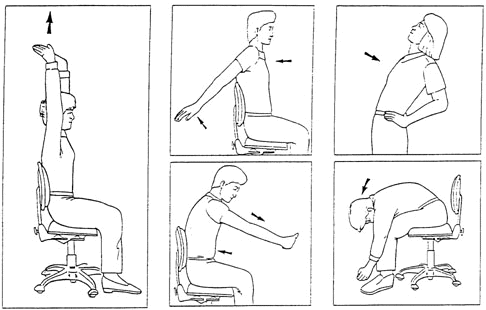
1. Take frequent breaks, at least 5 minutes every working hour.
2. Neck and shoulder exercises:
- Shrug your shoulders up and down.
- Pull your shoulder blades together and then relax.
- Pull your shoulders down while gently leaning your head to each side.
- Rotate your shoulders back several times and then forward several times.
- Slowly turn your head side to side several times.
3. Arm and hand exercises
- Rotate your wrists in slow circles for a minute.
- Stretch your arms upward, palms up and fingers interlaced. Hold for a few seconds and then relax.
- Wiggle your fingers for 15 seconds.
4. Look at your arms, wrists and fingers while you type.
This is probably not an exercise you’ll find discussed in most places that help you be more comfortable at your computer. But we’re learning that our eyesight is an important way our brains know what’s going on in our bodies. For many of us, we don’t look at the keyboard while we’re typing. What this causes us a mis-match between what our muscles are signaling to our brains and what’s coming in through our eyes.
By “correcting” this mis-match, i.e. letting our eyes register what movements we’re making, the mis-match goes away and pain can be less. Studies are beginning to show that this technique may prevent and decrease repetitive stress injuries such as carpal tunnel syndrome.
Question: Did you try these exercises? Were these exercises helpful?